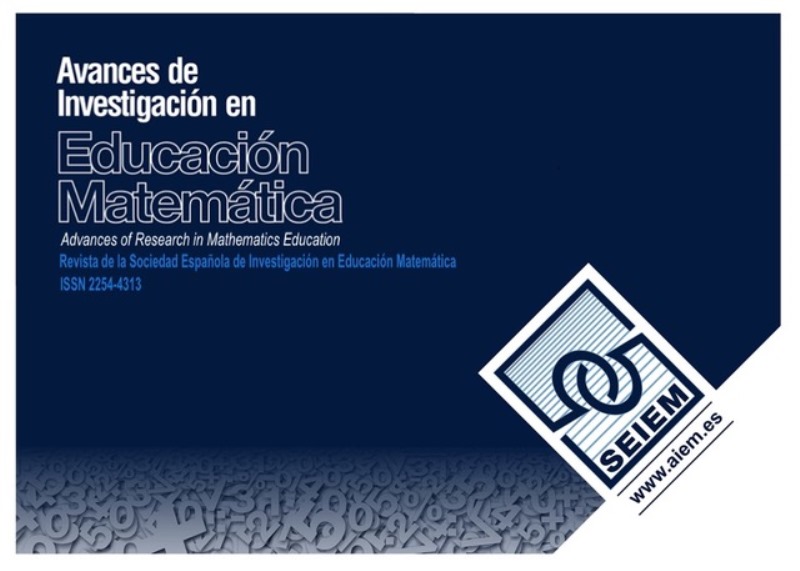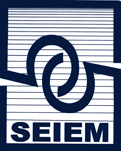Assimilation and accommodation mechanisms in the thematization of the derivative Schema
DOI:
https://doi.org/10.35763/aiem21.4241Keywords:
Schema, Thematization, Accommodation, Assimilation, DerivativeAbstract
In this article, Action-Process-Object-Schema (APOS) theory is used to examine the thematization of the derivative Schema and the role played by the equilibration mechanisms evidenced by some advanced students while facing tasks designed to confront the equilibrium of their Schemas and obtain thematization evidence. This investigation contributes to the study of Schema thematization by focusing on the mechanisms involved when students need to perform Action on their derivative Schema. Results show evidences on the role that accommodation and assimilation mechanisms play in students’ strategies when they re-equilibrate their Schema and evidence its thematization Which has not received previous attention.
Downloads
References
Artigue, M. (1995). La enseñanza de los principios del Cálculo: Problemas epistemológicos, cognitivos y didácticos. En M. Artigue, R. Douady & P. Gómez (Eds.), Ingeniería didáctica en educación matemática (pp. 97-140). Grupo Editorial Iberoamérica.
Arnon, I., Cottrill, J., Dubinsky, E., Oktaç, A., Fuentes, S. R., Trigueros, M., & Weller, K. (2014). APOS theory: A Framework for Research and Curriculum Development in Mathematics Education. Springer.
Asiala, M., Cottrill, J., Dubinsky, E., & Schwingendorf, K. (1997). The Development of Students’ Graphical Understanding of the Derivate. Journal of Mathematics Behavior, 16(4), 399-430. https://doi.org/10.1016/S0732-3123(97)90015-8
Baker, B., Cooley, L., & Trigueros, M. (2000). A calculus graphing schema. Journal for research in mathematics education, 31(5), 557-578. https://doi.org/10.2307/749887
Cooley, L., Trigueros, M., & Baker, B. (2007). Schema thematization: A framework and an example. Journal for Research in Mathematics Education, 38(4), 370-392. https://doi.org/10.2307/30034879
Font, V., Trigueros, M., Badillo, E., & Rubio, N. (2016). Mathematical objects through the lens of two different theoretical perspectives: APOS and OSA. Educational Studies in Mathematics, 91(1), 107-122. https://doi.org/10.1007/s10649-015-9639-6
Fuentealba, C., Badillo, E., & Sánchez-Matamoros, G. (2019). Identificación y caracterización de los subniveles de desarrollo del esquema de derivada. Enseñanza de las Ciencias, 37(2), 63-84. https://doi.org/10.5565/rev/ensciencias.2518
Fuentealba, C., Sánchez-Matamoros, G., Badillo, E., & Trigueros, M. (2017). Thematization of derivative schema in university students: nuances in constructing relations between a function's successive derivatives. International Journal of Mathematical Education in Science and Technology, 48(3), 374-392. https://doi.org/10.1080/0020739X.2016.1248508
García, M., Llinares, S., & Sánchez-Matamoros, G. (2011). Characterizing thematized derivative schema by the underlying emergent structures. International Journal of Science and Mathematics Education, 9(5), 1023-1045. https://doi.org/10.1007/s10763-010-9227-2
Lerman, S. (2014). Encyclopedia of Mathematics Education (pp. 579-582). Springer.
Pepin, B., Biehler, R. & Gueudet, G. (2021). Mathematic in Engineering Education; a Review of Recent Literature with a View towards Innovative Practices. International Journal of Research in Undergraduate Mathematics Education, 7, 168-188. https://doi.org/10.1007/s40753-021-00139-8
Piaget, J. (1975). L’équilibration des structures cognitives. Presses Universitaires de France.
Piaget, J., & García, R. (1982). Psicogénesis e Historia de la Ciencia. Siglo Veintiuno Editores S.A.
Roa-Fuentes, S., & Oktaç, A. (2010). Construcción de una descomposición genética: Análisis teórico del concepto de transformación lineal. Relime, 13(1), 89-112.
Sánchez-Matamoros, G., García, M., & Llinares, S. (2006). El desarrollo del esquema de derivada. Enseñanza de las Ciencias, 24(1), 85-98.
Trigueros, M. (2019). The development of a Linear Algebra schema: learning as result of the use of a cognitive theory and models. ZDM, 51(7), 1055-1068. https://doi.org/10.1007/s11858-019-01064-6
Trigueros, M. (2005). La noción de Esquema en la investigación en matemática educativa a nivel superior. Educación Matemática, 17(1), 5-31.
Trigueros, M., & Oktaç, A. (2005). La théorie APOS et l’enseignement de l’Algèbre Linéaire. Annales de Didactique et de Sciences Cognitives, 10, 157–176.
Vrancken, S., & Engler, A. (2014). Una Introducción a la Derivada desde la Variación y el Cambio: resultados de una investigación con estudiantes de primer año de la universidad. Bolema, 28(48), 449-468. https://doi.org/10.1590/1980-4415v28n48a22
Downloads
Published
How to Cite
Issue
Section
License
Copyright (c) 2022 Claudio Fuentealba, María Trigueros, Gloria Sánchez-Matamoros, Edelmira Badillo

This work is licensed under a Creative Commons Attribution 4.0 International License.
The articles published in this journal are under a license Creative Commons: By 4.0 España from number 21 (2022).
Authors who publish with this journal agree to the following terms:
- Authors retain copyright and keep the acknowledgement of authorship.
- The texts published in this journal are – unless indicated otherwise – covered by the Creative Commons Attribution 4.0 international licence. You may copy, distribute, transmit and adapt the work, provided you attribute it (authorship, journal name, publisher) in the manner specified by the author(s) or licensor(s). The full text of the licence can be consulted here: http://creativecommons.org/licenses/by-nc/4.0.
- Authors are able to enter into separate, additional contractual arrangements for the non-exclusive distribution of the journal's published version of the work (e.g., post it to an institutional repository or publish it in a book), with an acknowledgement of its initial publication in this journal.
- Authors are permitted and encouraged to post their work online (e.g., in institutional repositories or on their website) prior to and during the submission process, as it can lead to productive exchanges, as well as earlier and greater citation of published work (See The Effect of Open Access).









